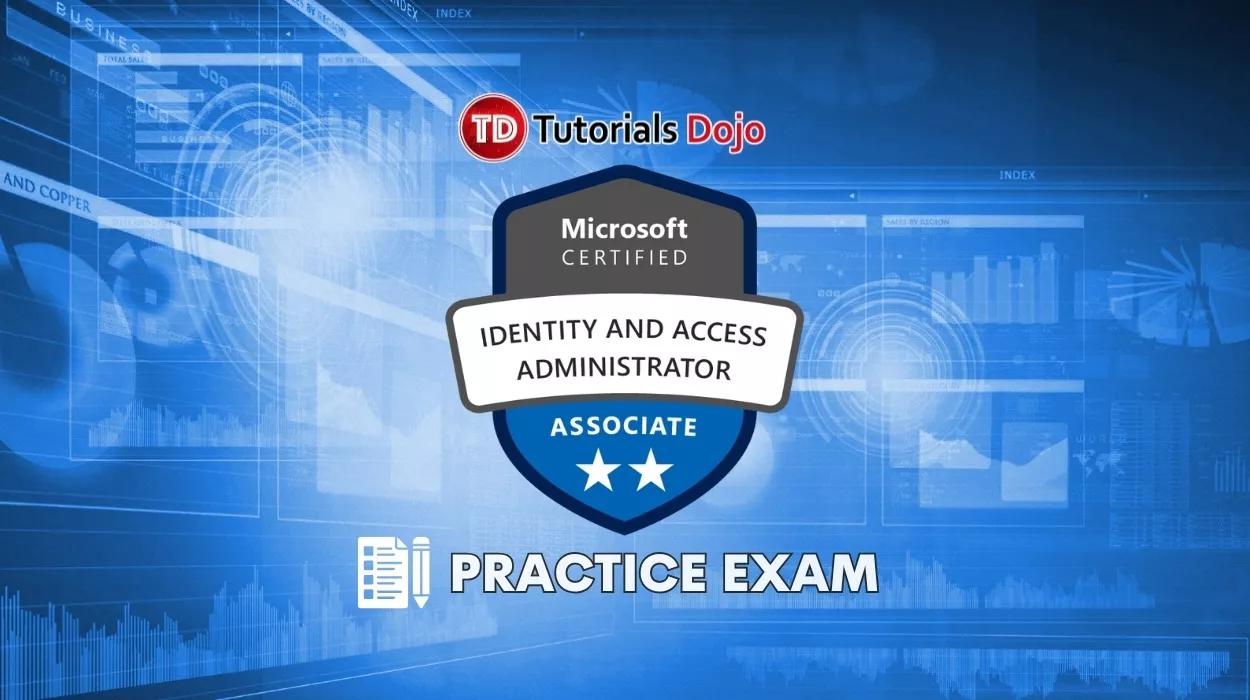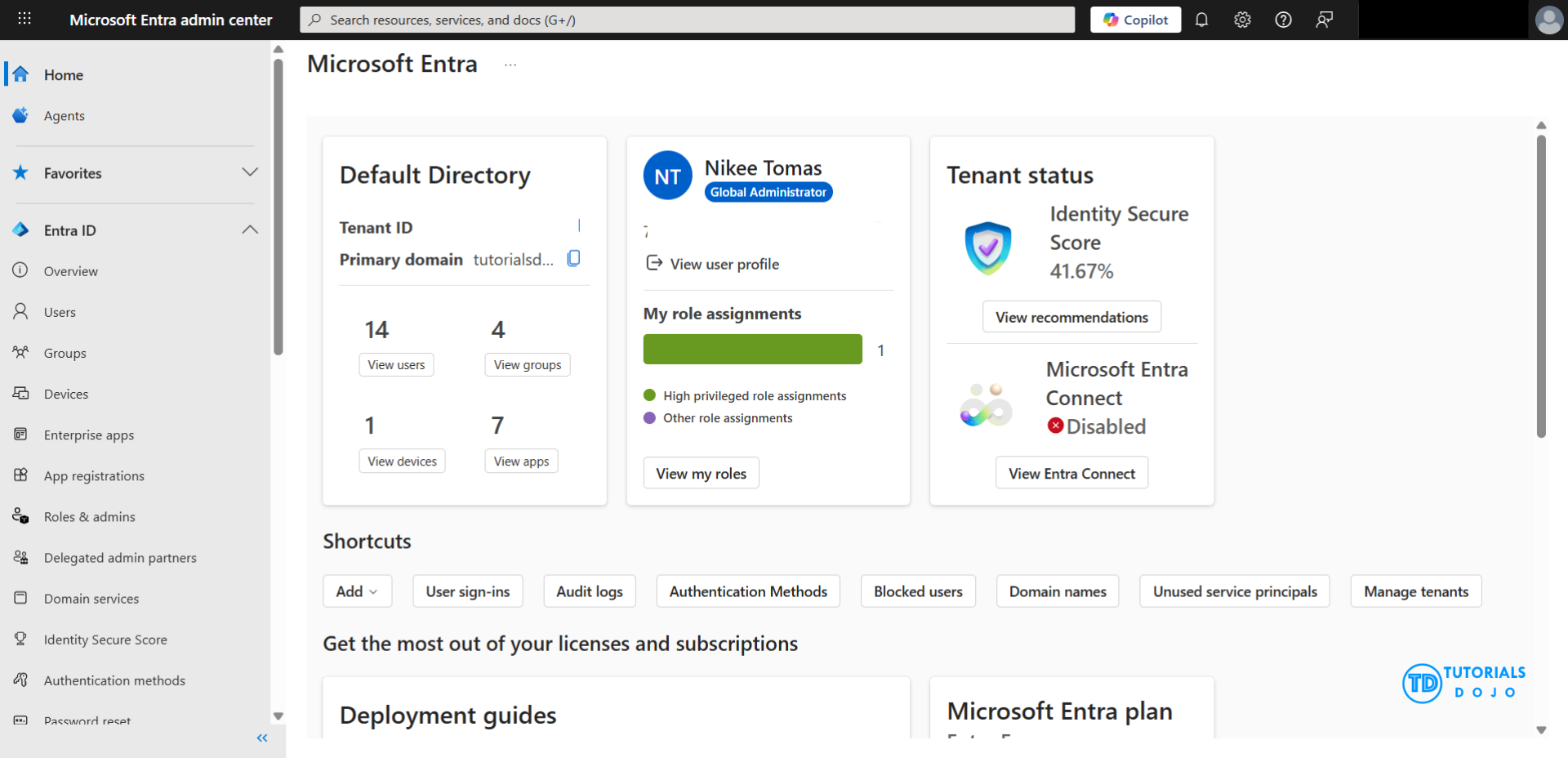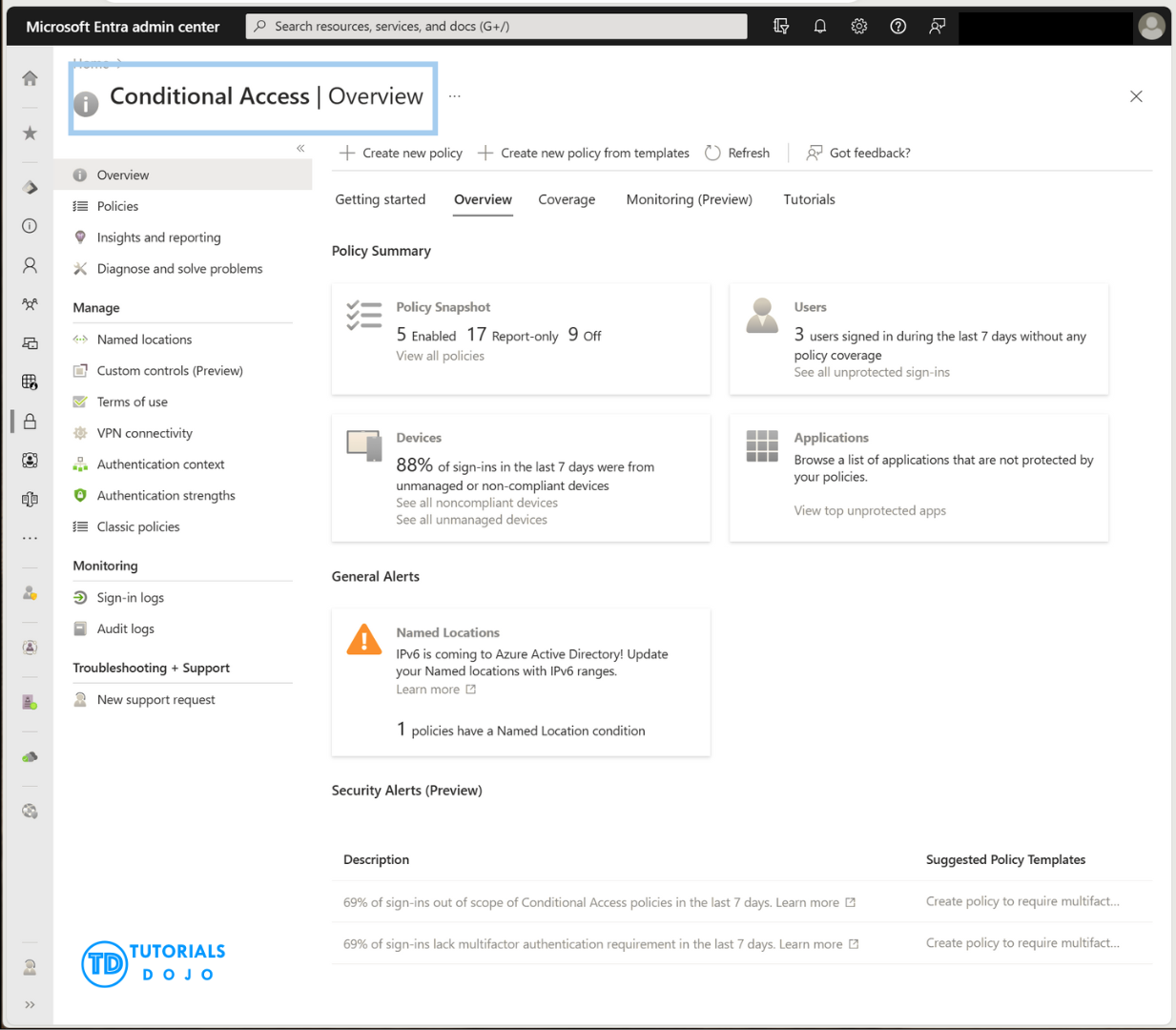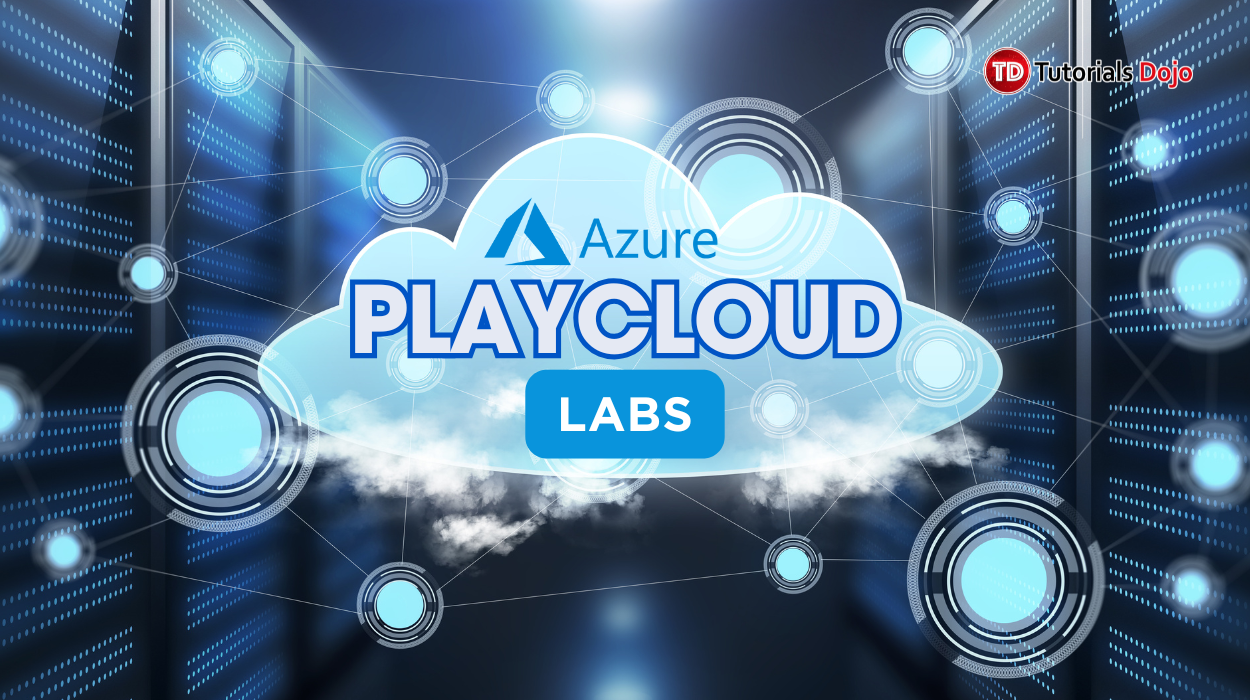The SC-300 Microsoft Identity and Access Administrator certification is designed for professionals responsible for designing, implementing, and managing identity and access management (IAM) systems for an organization. This role focuses on managing the Microsoft Entra ID services, configuring secure authentication and authorization, enabling self-service capabilities, and ensuring compliance and governance of identities across cloud and hybrid environments.
The exam will measure your skills in the following areas:
- Implement and manage user identities
- Implement authentication and access management
- Plan and implement workload identities
- Plan and automate identity governance
If you’re planning to take the SC-300 exam, reviewing the official exam skills outline is highly recommended. This study guide contains carefully curated resources to help you pass the exam with confidence.
Study Materials
Before attempting the SC-300 exam, it is essential to build both theoretical knowledge and hands-on skills. The exam focuses not just on understanding identity concepts but also on applying them in real-world scenarios using the Microsoft Entra admin center and related security tools. A combination of guided learning paths, official documentation, and practice tests will help ensure well-rounded preparation.
The following resources are highly recommended:
-
Microsoft Learn – this platform provides structured, role-based learning paths tailored to Microsoft certifications. For the SC-300 Microsoft Identity and Access Administrator exam, focus on topics such as:
-
Azure Documentation – the documentation contains in-depth guides, tutorials, and examples to help you understand Microsoft Entra ID, identity governance, access management for applications, and hybrid identity solutions.
-
Azure Blog – follow the blog to stay updated on new features, best practices, and announcements related to Microsoft Entra ID and other Azure identity services.
-
Azure FAQs – explore the FAQ sections within Microsoft Entra and Azure documentation to get quick answers to common questions around authentication, app management, and governance.
-
Azure Free Account – signing up for a free Azure account gives you 12 months of complimentary access to core services and free credits for the first 30 days, enabling you to gain hands-on practice with Entra ID and other identity-related features.
-
Tutorials Dojo’s Azure Cheat Sheets – our cheat sheets summarize Azure documentation into concise, bullet-point notes highlighting essential identity and access management concepts, making review quick and effective.
-
Tutorials Dojo’s SC-300 Microsoft Identity and Access Administrator Practice Exams – our practice tests simulate the actual exam format and difficulty level. Each question includes detailed explanations and references to official Microsoft documentation to help you fully grasp key concepts before taking the exam.
-
Microsoft Entra Documentation – crucial for learning how to implement authentication, configure Conditional Access, enable self-service, and manage external identities.
-
Microsoft Entra Blog – follow the latest updates, best practices, and feature announcements about Microsoft Entra services, including identity governance, authentication methods, and app management.
-
Microsoft Entra FAQs – provides answers to common questions about user and group management, app registrations, hybrid identity, and governance policies.
Azure Services to Focus On
Microsoft documentation is the main source of knowledge when preparing for the SC-300 Microsoft Identity and Access Administrator exam. To succeed, ensure you have a solid understanding of the following services and features:
-
Manage users, groups, and administrative units.
-
Configure multi-factor authentication (MFA), passwordless authentication, and risk-based access.
-
Design and implement Conditional Access policies to enforce access controls.
-
Manage role assignments using built-in roles, custom roles, and directory roles.
-
Support hybrid identity with Microsoft Entra Connect and Entra Cloud Sync.
2. Microsoft Entra Conditional Access
-
Build and apply access policies to secure user sign-ins.
-
Combine conditions such as location, device state, and sign-in risk.
-
Use authentication strengths to enforce phishing-resistant MFA methods.
-
Test and troubleshoot policy impacts using What If tools.
3. Microsoft Entra External Identities
-
Configure guest user access (B2B) for partners and contractors.
-
Manage cross-tenant access and collaboration settings.
-
Enable custom Terms of Use and governance controls for external users.
4. Microsoft Entra Identity Governance
-
Implement Entitlement Management for access packages.
-
Configure Access Reviews for users, groups, apps, and roles.
-
Automate lifecycle management with Lifecycle Workflows.
-
Monitor compliance using audit logs and reporting.
5. Microsoft Entra Privileged Identity Management (PIM)
-
Manage just-in-time role assignments for administrators.
-
Require approval workflows and MFA for privileged role activations.
-
Configure role assignment alerts and audit role usage.
6. Application Management in Microsoft Entra ID
-
Register and manage applications in Entra ID.
-
Configure Enterprise Applications and implement Single Sign-On (SSO) with SAML, OIDC, and OAuth.
-
Use App Proxy to securely publish on-premises applications.
-
Assign and monitor app roles and permissions.
7. Microsoft Entra ID Protection
-
Detect and respond to risky users and risky sign-ins.
-
Configure automated remediation policies.
-
Monitor identity-related threats in real time.
8. Microsoft Entra multifactor authentication
-
Configure tenant-wide MFA requirements.
-
Enforce passwordless options like FIDO2 security keys and Authenticator app.
-
Implement Conditional Access MFA policies for sensitive workloads.
9. Microsoft Defender for Cloud
-
Understand Secure Score, recommendations, and compliance views.
-
Apply governance with Azure Policy integration.
-
Protect workloads such as servers, databases, and storage accounts.
-
Monitor and respond to security alerts.
10. Microsoft Entra monitoring and health
-
Review sign-in logs, audit logs, and provisioning logs in the admin center.
-
Configure diagnostic settings to export logs to Log Analytics, Event Hubs, or Storage.
-
Use workbooks and KQL queries for analysis.
-
Monitor directory health with Entra Connect Health.
Validate Your Knowledge
If you’ve completed the recommended study materials and gained hands-on experience, the next step is to validate your readiness for the SC-300 Microsoft Identity and Access Administrator exam. One of the best ways to do this is by taking Tutorials Dojo’s SC-300 Practice Exams.
These practice tests are designed to closely mirror the real exam by covering identity and access scenarios across Microsoft Entra ID, Conditional Access, PIM, External Identities, and Governance. You’ll encounter different types of questions such as single choice, multiple response, hotspot, drag and drop, yes/no, and case studies. Each question includes a comprehensive explanation and official reference links to reinforce your understanding of the topic.
After completing the practice exams, you’ll be able to identify knowledge gaps and focus on areas that need improvement. Combined with our concise cheat sheets, these practice exams will help you master the exam domains and approach the certification test with confidence.
Sample Practice Test Questions:
Question 1
Your organization uses a Microsoft 365 E5 subscription and wants to deploy an on-premises HR application to remote employees securely. The solution must allow only approved users to access the app while ensuring centralized management of identities and roles.
As part of the deployment, you assign an engineer the Application Administrator role to configure application settings. The engineer must create a connector group and configure an application proxy to enable secure remote access to the on-premises app. In addition, the security team requires that Conditional Access policies be applied to the app to enforce multifactor authentication for external users.
Which portal should the engineer use to perform these tasks?
1. Microsoft Defender portal
2. Microsoft Entra admin center
3. Microsoft 365 admin center
4. Microsoft Azure Portal
Question 2
Your organization manages identities in a single Microsoft 365 tenant using Microsoft Entra ID. The compliance team recently required that employees must explicitly agree to the company’s updated acceptable use guidelines before accessing cloud applications.
As an identity administrator, you are asked to configure a solution that enforces the organization’s terms of use whenever users attempt to sign in to Microsoft 365 resources. The solution should apply automatically and ensure that users cannot proceed without accepting the policy.
Which should you configure to meet this requirement?
1. Access reviews in Microsoft Entra ID
2. Conditional Access policy in Microsoft Entra ID
3. Identity Protection risk policies in Microsoft Entra ID
4. Privileged Identity Management in Microsoft Entra ID
For more Azure practice exams questions with detailed explanations, check out the Tutorials Dojo Portal.
Final Remarks
Success in the SC-300 Microsoft Identity and Access Administrator exam requires both theoretical understanding and practical experience. It’s not enough to memorize features, you need to know how to apply Microsoft Entra ID capabilities such as Conditional Access, PIM, and Identity Governance in real-world identity and access scenarios.Spend time in the Microsoft Entra admin center creating policies, managing external identities, and configuring app registrations. Hands-on practice will give you the confidence to answer scenario-based questions that reflect how identity and access solutions are implemented in enterprise environments.
Keep in mind that Microsoft services evolve rapidly. Stay updated with the latest changes in authentication methods, Conditional Access policies, and governance features by reviewing Microsoft documentation, blogs, and announcements. Regularly revisit your study materials, practice exams, and cheat sheets to strengthen your knowledge and adapt to new updates.
By combining hands-on labs, guided study resources, and Tutorials Dojo practice tests, you’ll build the expertise needed to pass the SC-300 exam and take on the role of a Microsoft Identity and Access Administrator with confidence.
Good luck on your certification journey, you’ve got this! 🚀





















